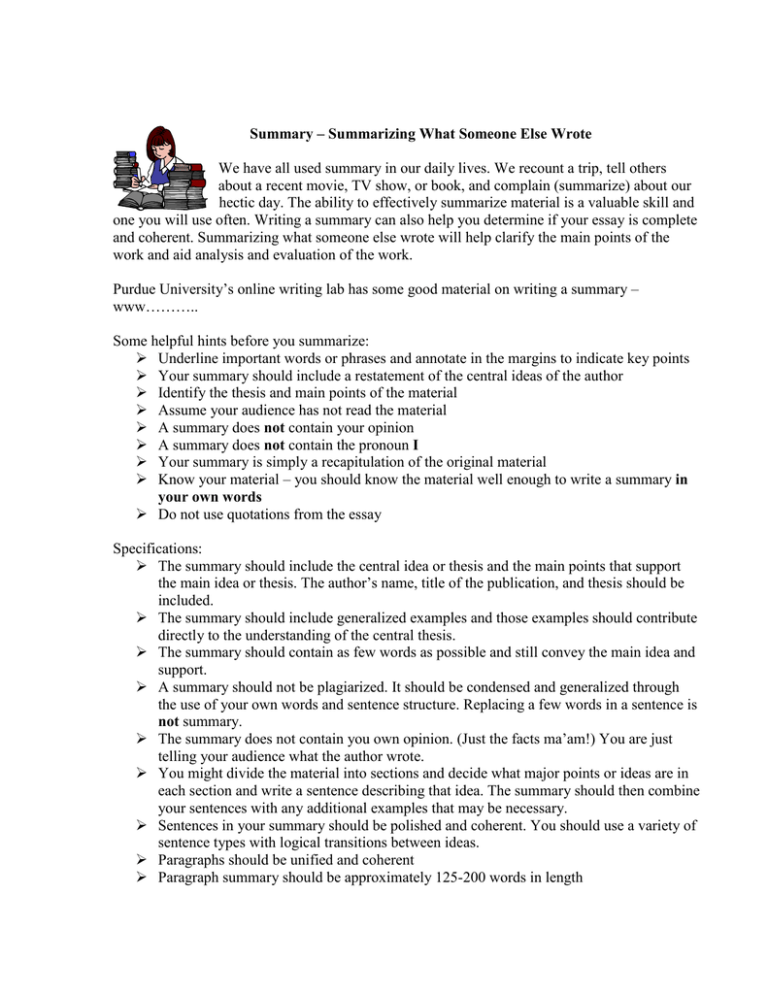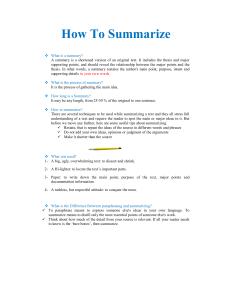Summary – Summarizing What Someone Else Wrote
advertisement

Summary – Summarizing What Someone Else Wrote We have all used summary in our daily lives. We recount a trip, tell others about a recent movie, TV show, or book, and complain (summarize) about our hectic day. The ability to effectively summarize material is a valuable skill and one you will use often. Writing a summary can also help you determine if your essay is complete and coherent. Summarizing what someone else wrote will help clarify the main points of the work and aid analysis and evaluation of the work. Purdue University’s online writing lab has some good material on writing a summary – www……….. Some helpful hints before you summarize: Underline important words or phrases and annotate in the margins to indicate key points Your summary should include a restatement of the central ideas of the author Identify the thesis and main points of the material Assume your audience has not read the material A summary does not contain your opinion A summary does not contain the pronoun I Your summary is simply a recapitulation of the original material Know your material – you should know the material well enough to write a summary in your own words Do not use quotations from the essay Specifications: The summary should include the central idea or thesis and the main points that support the main idea or thesis. The author’s name, title of the publication, and thesis should be included. The summary should include generalized examples and those examples should contribute directly to the understanding of the central thesis. The summary should contain as few words as possible and still convey the main idea and support. A summary should not be plagiarized. It should be condensed and generalized through the use of your own words and sentence structure. Replacing a few words in a sentence is not summary. The summary does not contain you own opinion. (Just the facts ma’am!) You are just telling your audience what the author wrote. You might divide the material into sections and decide what major points or ideas are in each section and write a sentence describing that idea. The summary should then combine your sentences with any additional examples that may be necessary. Sentences in your summary should be polished and coherent. You should use a variety of sentence types with logical transitions between ideas. Paragraphs should be unified and coherent Paragraph summary should be approximately 125-200 words in length


